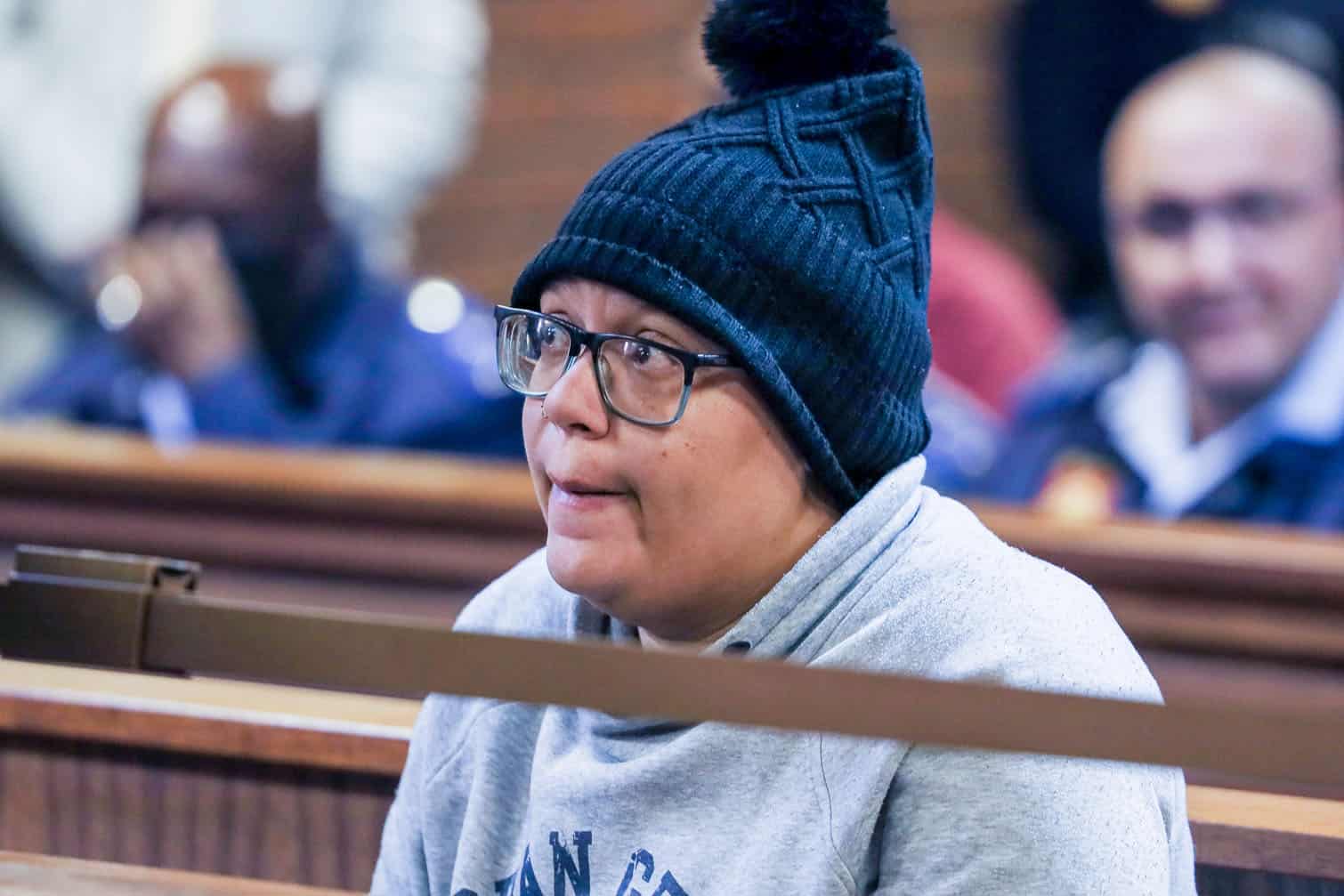Conflicting accounts emerged regarding how and where Jayden-Lee Meek's body was initially found.

The investigating officer in the Jayden-Lee Meek murder case faced intense scrutiny during Friday’s proceedings in the Roodepoort Magistrate’s Court, with the defence questioning critical evidence and investigative procedures.
Investigating officer Nceba Diko outlined multiple red flags in suspect Tiffany Meek’s behaviour while defending his investigative methods against accusations of procedural failures.
Timeline discrepancies
Defence attorney Noven Naidoo on Wednesday had presented Bolt e-hailing records showing Tiffany Meek left her mother’s house at 5.12am on 14 May, contradicting security guard statements that placed her at the residence between 4am and 5am.
The records revealed Meek departed her flat at 5.47am before the body was discovered.
Diko emphasised a crucial detail overlooked by the defence.
“The applicant was inside her flat number alone, which is something that you have forgotten to tell this court,” he said.
He added that Meek’s solitary presence was significant, given her usual family arrangements.
“She was not only just there, she was there alone. Of which that is something surprising to me, she’s been with her family [all along and then] all of a sudden she is there alone and you don’t mention that,” Diko said.
ALSO READ: Jayden-Lee Meek murder case: Missing pages and immigration status take centre stage
Jayden-Lee Meek murder case evidence collection under fire
The investigation’s handling of physical evidence came under sharp criticism.
No fingerprints were recovered from Jayden-Lee’s school bag which serves as court evidence.
When questioned about this omission, Diko explained that fingerprint experts determined school bags are unsuitable materials for lifting prints.
Diko confirmed he sealed the school bag as evidence on 16 May 2025.
He arrived at Tiffany Meek’s residence, Swazi Place, around 3pm to find officers and photographers already processing the scene.
The investigating officer said he maintained his distance from the primary crime scene area.
“I never got closer to the room because there were already officers processing the scene, I only took the witness on the ground and left for the [police] station,” Diko testified.
ALSO READ: State disputes framing claims in Jayden-Lee Meek case, warns mother could destroy evidence if freed
Controversial pillow evidence
A bloodstained pillow found at Meek’s residence became a contentious piece of evidence.
Laboratory results confirmed the blood belonged to Jayden-Lee, while tests on a bed sheet retrieved from the same location proved inconclusive.
The pillow was discovered without a pillowcase.
Defence attorney Naidoo said that multiple parties present during the crime scene processing failed to notice the pillow.
“The accused, the defence witness and members of the community, community activists, all those who were present, even inside unit 13 while the crime scene was being processed, none of them had sight of this pillow either,” Naidoo said.
Diko acknowledged this could only be verified by questioning those present at the scene.
Jayden-Lee’s body discovery details disputed
Conflicting accounts emerged regarding how and where Jayden-Lee’s body was initially found.
Cross-examination revealed the security guard was not the first to discover the body.
Instead, a tenant from unit 8 made the initial discovery, alerting other residents before Tiffany was summoned to the scene.
Naidoo claimed he received information suggesting a security guard moved the child’s body from the ground floor to where it was ultimately found.
However, Diko firmly rejected this version of events.
“It’s my first time hearing about this in this court that the child was found somewhere else, since I have done my investigations the child was found behind the staircase of the stairs and the security moved him to the other side. Never in any other floor the child was found,” Diko said.
ALSO READ: Jayden-Lee Meek murder: Cracks in mother’s version of events surface
Investigation gaps highlighted
The defence pointed to several investigative shortcomings, including failure to fully utilise canine evidence.
Naidoo told the court that the detection dog, Ace, had followed Jayden-Lee’s scent from a pillow to a third-floor flat, but police declined to investigate further.
“There are sequences of events that followed the death of Jayden and the police failed in their duties to follow up with all of these. Jayden’s pillow was supplied to a dog handler, the scent of the pillow led to a flat on the third floor. The police refused to go and enter that flat,” Naidoo said.
The court learned that someone left the residential complex at 5.30am without seeing the body, suggesting that it had not yet been placed there.
Naidoo suggested in a hypothetical scenario that 10 other people could have passed the scene between 5.30am and 6.25am when the body was discovered.
He said if that was the case, someone should have seen the body during those times.
Outstanding investigation elements
Diko acknowledged that several investigative components remain incomplete.
He said he awaited reports from UV light experts and blood analysis results from the sheet evidence.
According to Diko, about five witness statements still needed to be collected.
When questioned why these statements had not been obtained during Meek’s 14-day custody period, Diko said his involvement in other investigations had delayed progress.
He committed to following up on outstanding reports and acknowledged they may require additional time.
The case was postponed until Monday, 28 July 2025, for closing arguments.
Tiffany Meek remains in custody as the investigation continues.
READ NEXT: ‘I never abused my child’ – Tiffany Meek denies murder allegations in bail bid






